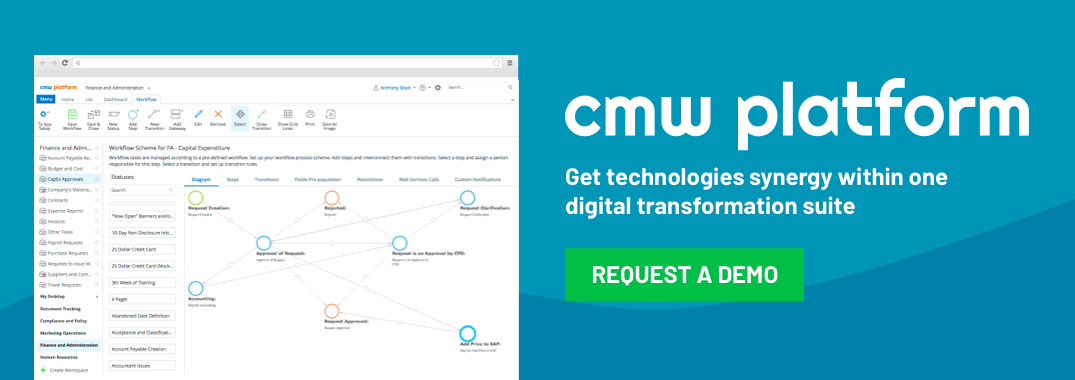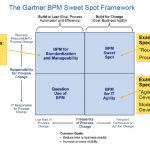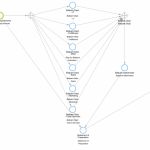4 Questions to Ask When Choosing the Right Project Management Software
February 15, 2023
From low end to midrange to high end, the IT market is teeming with a whole slew of project management software to choose from. Having a lot of choices, however, isn’t always a good thing. Analysis paralysis isn’t a pretty thing. And then, there, too, are buyer’s remorse and finding yourself stuck with a software system that may not withstand the test of time.

To get started in the right direction, here are four questions to ask when choosing the right project management software:
- What project management software features does your company need?
- How adaptive should the software be?
- Are there existing software platforms to consider?
- Should the project management software be on-premise or via the cloud?
Table of Contents
What project management software features does your company need?
Not all projects are created equal. Project complexities vary from industry to industry, and even within the same industries, project requirements differ from company to company. For example, a company engaged in marketing won’t have the same project requirements as a software development company. A software development company specializing in gaming apps may employ an internal project management strategy that’s at odds with that of one that develops enterprise software.
Full-blown project management software vs. simple project collaboration tools
Gantt charts, graphical workflow builder, resource allocation – these are software features that project managers involved in big and complex projects find handy. On the flipside, companies that carry out simple projects involving a smaller pool of resources may not need a full-blown project management software system to steer a project to completion. Simple cloud project collaboration tools, even the free ones with limited features, may sometimes suffice.
Long story short, feature-rich doesn’t automatically mean better. The key is to know the goals your company is trying to accomplish, including the specific problems you’re trying to solve. More than what you need is fluff and a waste of space.
How adaptive should the software be?
Work environments may sometimes need a complete overhaul, like in the case of a project management approach that is more a liability than an asset. But in a lot of cases, a project management solution is deployed to enhance an existing system. Either way, integrating a project management tool into a company’s ongoing processes affects a lot of stakeholders, particularly the software’s end users.
Your software of choice, therefore, should adapt to the work environment people are already used to, significantly reducing, if not totally eliminating, the learning curve. We all know what happens when end users have to contend with software intricacies more than their usual day-to-day tasks – human errors, reworks, project delays, among others.
Agile vs. waterfall
As in software development, project management solutions use two popular methodologies – agile and waterfall. Agile has been created to augment the weaknesses of the waterfall methodology, but it’s not necessarily always the right solution.
As a rough guideline, agile is best used for consumer-driven projects where changes are a common fare, and where actual results can be radically different from those expected. Waterfall, on the other hand, is compatible with projects with defined tasks and sequences, and the final deliverable being exactly as is expected.
Are there existing software platforms to consider?
Is your company dependent on MS Outlook or SharePoint? Does your company use very specific reporting formats or require unique data import/export options? When considering a project management software, keep in mind all the software tools your company is already using. The best choice should allow you to keep your existing systems, so that the integration process doesn’t hurt your company in terms of training time, data input and lost opportunities.
Should the project management software be on-premise or via the cloud?
“To cloud or not to cloud?” is a question we hear a lot. The fact that more and more businesses are moving their data to the cloud is evidence that cloud-based project management software have their advantages.
Aside from being available anywhere in the world and on any device, a cloud-based project management application doesn’t require you to install anything and is most likely compatible with any operating platform – Windows, Mac OS, Linux, etc. The downside is that without a working Internet connection, or in the event of a server anomaly, which is definitely not your fault, you won’t be able to use the software and access your data.
The foremost redeeming quality of on-premise software, on the other hand, is data safety and security, particularly if you own sensitive data that you’d rather keep in-house. Remember though that unlike web-based software applications, your data is restricted within the company’s premises, and highly skilled IT guys may need to be onboarded to keep your servers in pristine working condition.
Conclusion
While trial-and-error plays a part in determining your ultimate pick, keep in mind that in project management, acknowledging the shortcomings of your previous endeavors, if any, knowing what you already have and what you plan to accomplish are essential to narrow down your software choices from the hundreds to a considerable few.




